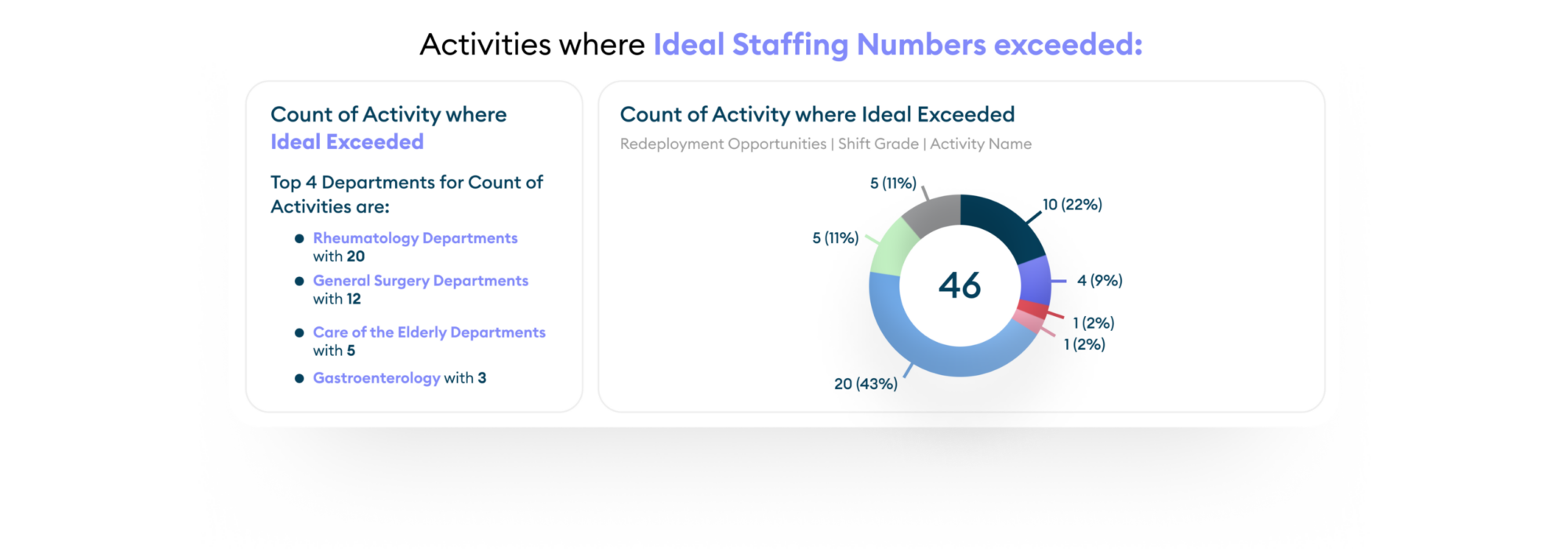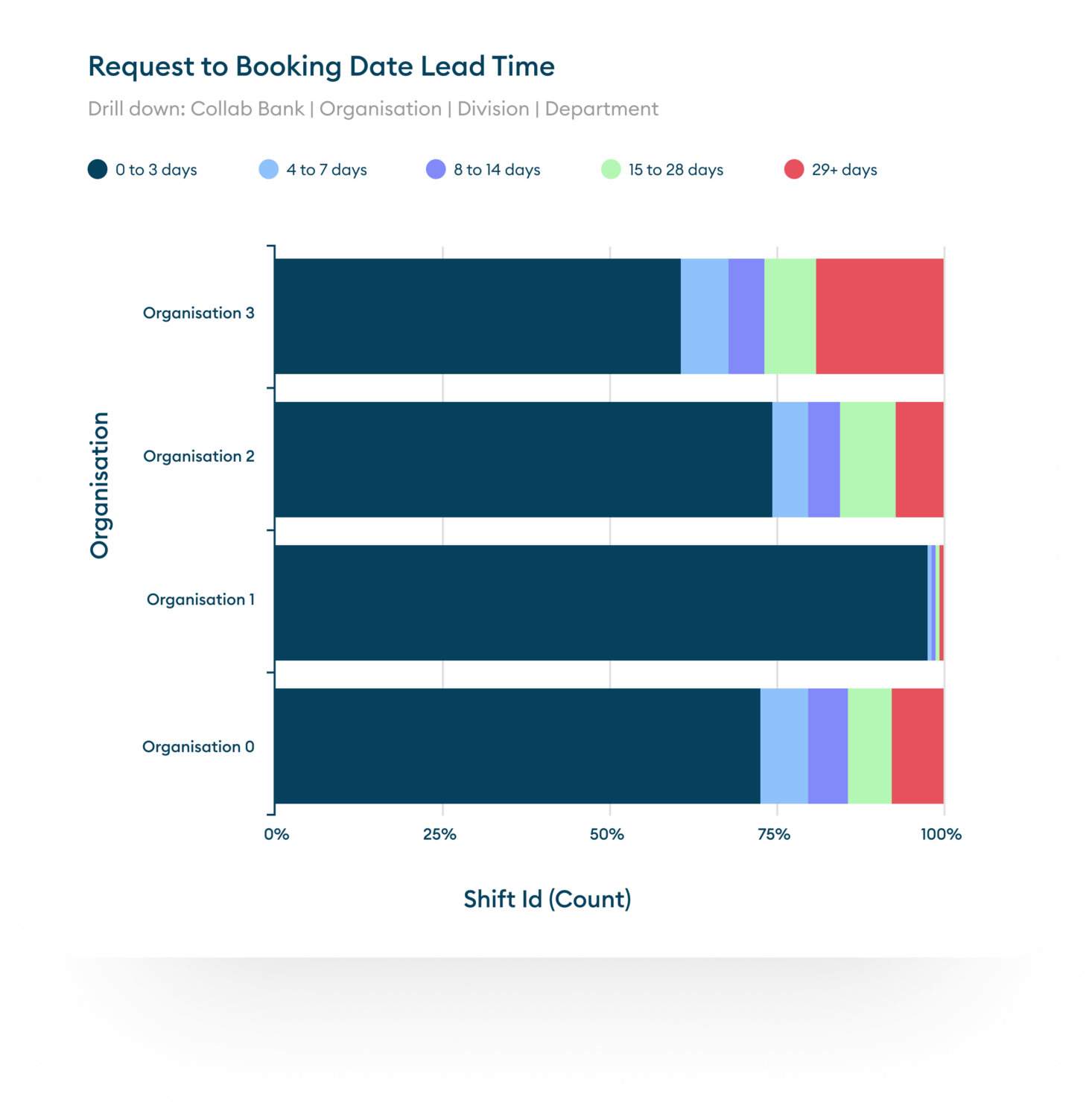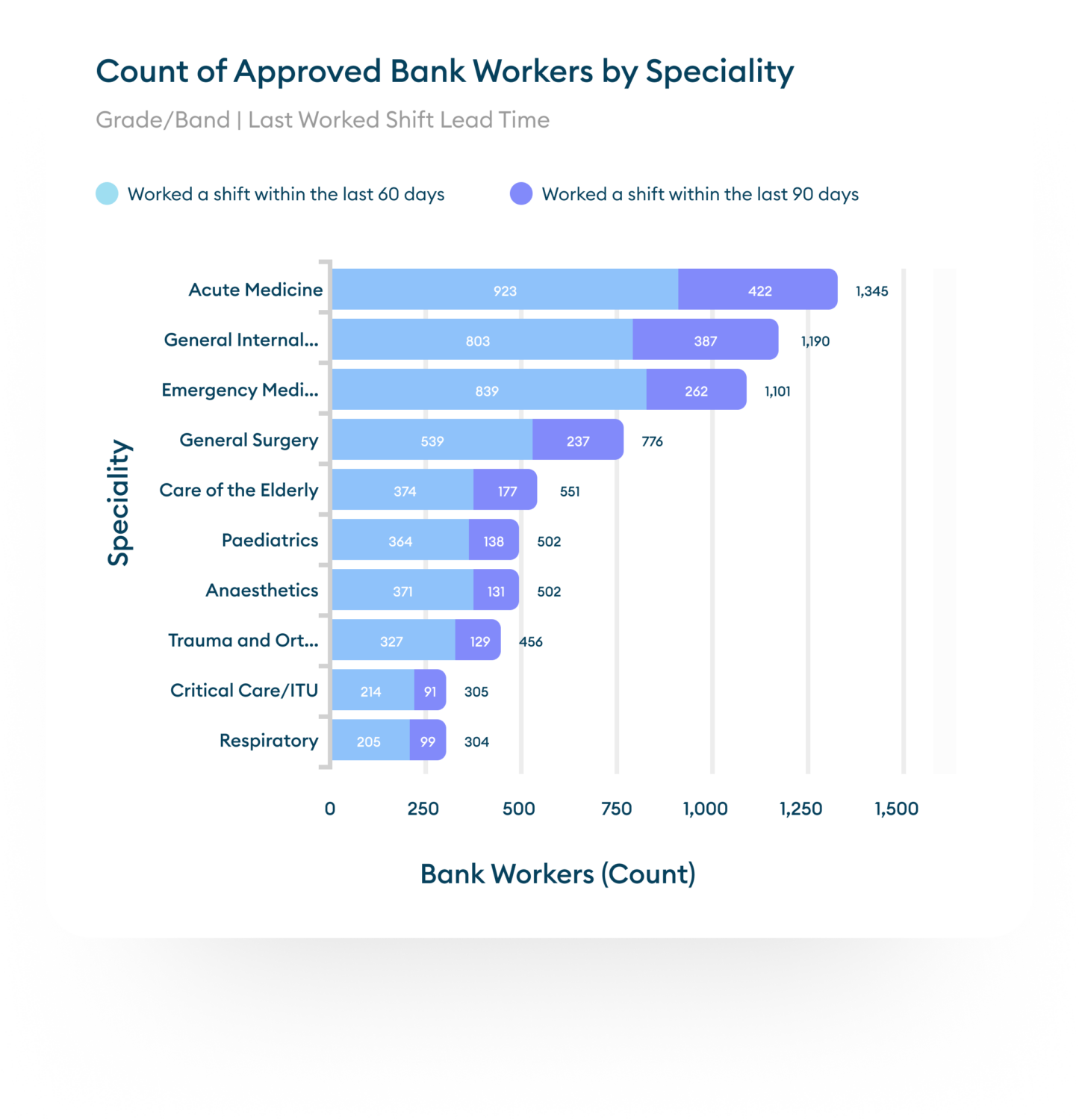Boosting NHS productivity with workforce data and insights

What is productivity in the NHS?
Productivity is a crucial focus for NHS organisations, given the current impact managing a vast and diverse workforce can often have on efficiency. Reliance on outdated processes and fragmented staffing systems has often led to ineffective staffing and unnecessary costs. And without real-time access to NHS workforce statistics, organisations are forced to react to staffing issues at the last minute instead of managing them proactively. Below, we outline the challenges organisations face when it comes to workforce insights, and how a data-driven solution can enhance NHS workforce productivity.
How does inconsistent NHS workforce data impact decision-making?
In the NHS, decisions about workforce deployment are often made with outdated or incomplete data, resulting in potential understaffing or overstaffing, both of which place undue strain on resources. For example, without visibility of previous active bank workers, staffing teams may source an agency worker rather than relying on known, and more cost-effective, bank workers to fill gaps. This can lead to a myriad of inefficiencies across departments. Making any decision without all the necessary tools is difficult, however, what is frustrating for many managers is that NHS workforce statistics are there, but many systems don’t easily surface this information for teams to access when necessary.
Inform decision-making with NHS workforce statistics
To address this, systems should enable staffing managers to leverage real-time data insights to make informed decisions about workforce deployment through reporting software. By continuously monitoring staffing activities – such as shift patterns, absenteeism rates, and retention trends – administrators can proactively manage staffing levels, reducing the risk of misallocation. This ensures resources are used where they are most needed, enhancing overall efficiency simply by tapping into the NHS workforce statistics coming out of day-to-day workforce management.
One example of this in practice is access to data relating to shift lead times – if systems enable managers to identify the average lead times for different shift bookings, they can more easily and accurately decide the appropriate time to broadcast, or escalate, specific shifts to maximise fill rates. As a result, managers can save time on delivering crucial actions, feel reassured that decisions are backed by data and help minimise staffing spend.

Poor engagement from clinicians
Retaining staff is critical in the NHS, given the latest NHS Staff Survey reported that 29% of participants often think about leaving. Yet without further insight into where bottlenecks or disengagement are occurring, recruitment and retention efforts can be inefficient and costly. Traditional processes often involve long wait times and manual approvals, which can deter clinicians from completing the onboarding process. Clinicians might be discouraged from engaging with digital platforms too if the onboarding process is cumbersome or delayed, leading to low engagement and underutilisation of available staff.
Without visibility into these issues, organisations risk losing valuable workers before they have even started. When managers aren’t granted access to the number of available clinicians and where they can be most appropriately deployed, it becomes even harder to plan and manage staffing activities effectively, significantly reducing productivity as a result.
Better utilisation of the workforce
NHS workforce statistics offer a solution by enabling organisations to streamline recruitment and retention efforts. By tracking the number of applicants awaiting approval to staff banks and their specialities, for example, NHS trusts can prioritise onboarding for high-demand roles. Monitoring the time it takes for an applicant to move through the system also helps identify and address any delays. This proactive approach ensures that departments with urgent needs are prioritised, reducing the time and costs associated with recruitment.
By analysing the demographics and engagement levels of bank workers specifically, NHS organisations can make informed decisions that improve workforce utilisation. Identifying specialities with a high number of unengaged workers allows for targeted re-engagement strategies, ensuring these workers are effectively utilised. This approach not only optimises the full use of the current workforce but also prevents unnecessary recruitment efforts in areas that are already well-staffed.

Conclusion
Leveraging NHS workforce statistics is a game-changer for boosting productivity within the NHS. By integrating real-time information into decision-making processes, organisations can move from reactive to proactive workforce management. Data-driven insights allow teams to anticipate staffing needs, address inefficiencies before they escalate, and ensure that resources are optimally allocated.
For NHS staff working with data, the goal is to transform these numbers into actionable insights that empower teams to be as productive as possible. With these tools, organisations can confidently navigate the complexities of workforce management, making informed choices that increase productivity, drive efficiency, and support a happier, more engaged workforce.